The question of how long your robotic mower will take to mow your lawn is not so easy to answer. I have already examined how you can figure out approximately how long it takes to mow a certain area. I came to the conclusion that the subject can even become highly complex if you try to calculate it very particularly. But let’s try to keep it simple for now, before we go into the deeper theory. How long does a robotic mower normally take?
In most cases, a robotic mower has to mow the lawn about everyday or every other day, with a daily mowing time of between 3 and 6 hours. The duration of the mowing time depends very much on the size and nature of the mowing area, as well as on the area output of the machine.
Personal preferences also play a role here. For example, do you not want the robotic mower to mow on the weekend because the children are playing in the yard, or should your robotic mower only mow every other day during the week? Then it has to do more on the days when it is allowed to mow. Either by mowing longer during the day, or simply by having more “mowing power”, i.e. a higher area output.
Later in this article I will discuss which factors influence the area output of a robotic mower and which conditions in the yard influence the actual area output. Then I will explain how you can find out what kind of area output your robotic mower should have. But first of all you will simply get some typical values for known robotic mowers.
Contents
How long does the robotic mower typically take?
Here you get some typical values of a few robotic mowers- how long they need for different sized areas. But before that we have to clarify a few terms:
- Mowing cycle: This is the average time your robotic mower needs to work the entire area once. This can happen in just one day, or after two days or even a week.
- Area output: This refers to the area for which a robotic mower is designed. In most cases, a robotic mower is advertised very clearly by the area it is suitable for. On Amazon, for example, this is almost always in the title of the product. However, the manufacturers usually assume that the robotic mower is operated for about 120 hours a week, which is rather unrealistic in reality.
- Actual area output: The area output that the manufacturers specify assumes conditions that are often not present in reality. For example, that the robotic mower mows 12 hours a day, that the yard is very level and simply structured and that there are no obstacles. You must therefore find out the actual area output for your yard and your requirements yourself. Below I will explain how to do this.
Typical duration of a mowing cycle
Now we come to the part you’ve probably been waiting for, namely some concrete numbers. But be aware that these are only very rough guidelines. Various factors can cause your robotic mower to actually do a lot less, such as a very winding and complex yard, or many slopes that put more strain on the battery.
It is therefore important that you at least roughly estimate the actual area output in your yard. You can find out more about this below. The following values are calculated from the average mowing speed, i.e. the mown square meters per hour, including loading time.
| Area (acre) | Worx Landroid M 20V W140 | Robomow RS622 | Husqvarna Automower 430x | Husqvarna Automower 450x |
| 0.01 | 0:30 | 0:48 | 0:18 | 0:12 |
| 0.02 | 1:00 | 1:37 | 0:37 | 0:24 |
| 0.05 | 2:31 | 4:02 | 1:33 | 1:00 |
| 0.1 | 5:03 | 8:05 | 3:06 | 2:01 |
| 0.15 | 7:35 | 12:08 | 4:40 | 3:02 |
| 0.2 | 10:07 | 16:11 | 6:13 | 4:02 |
| 0.3 | 15:10 | 24:16 | 9:20 | 6:04 |
| 0.4 | 20:14 | 32:22 | 12:27 | 8:05 |
| 0.5 | 25:17 | 40:28 | 15:33 | 10:07 |
| 1 | 50:35 | 80:56 | 31:07 | 20:14 |
In the table above you can see how long your robotic mower needs for one mowing cycle, i.e. to mow the entire area once. For example, a Worx Landroid M 20V will take an average of 15 hours to mow an area of 0.3 acre once. But what does this information mean to you now?
Does the robotic mower have to mow every day?
The robotic mower does not have to mow every day; it is also sufficient if it mows every other day. However, it should not mow less frequently than this, as the grass becomes too long to serve as mulch and then becomes tangled or rotten.
You have to take into account that the robotic mower must of course make up for what it missed on the off days on the days it mows, and must mow longer accordingly. So if you only want to use your robotic mower every other day, for example, or if you don’t want to mow on weekends so that your children can play in the yard unattended, it is generally recommended to choose a more powerful model.
What about mowing during the night?
Most robotic lawn mowers are extremely quiet, which is why it’s not a far-fetched idea to have them also mow at night.You can schedule the robotic mower to mow your lawn at whatever time you want, including in the middle of the night.
If your robotic lawn mower installation is without flaws, then your robotic lawnmower will reliably mow your lawn even if it is completely unattended. There is no general law that forbids you from using your robotic lawn mower during the night.
However, you should make sure that you’re not disturbing your neighbor’s good night sleep, because that could be cause for conflict. In closer populated areas, where there’s not too much space between the individual houses and everybody lives a little bit closer together, running the robotic lawnmower during the night can be cause for problems with your neighbor.
If you want to run your robotic lawn mower during the night you should pay closer attention to the specified loudness of the model you are going to buy. There’s a big difference between the quietest robotic lawn mowers and the ones that are comparably loud.
While HUSQVARNA’s models usually have a noise level of around 56 to 58 decibel, others can go up to even 70, which is a huge difference. One upcoming robotic lawn mower, the so called “Toadi”, only reaches a noise level of 50 decibel, which is quieter than a running fridge.
How long does the robotic mower operate per day?
You would probably rather know how long the robotic mower has to drive around outside every day until it retires until the next mowing. Well, again, this is not so easy to answer. For one thing, everyone has a different idea of what a “well-kept lawn” is. On the other hand, as mentioned above, it depends on whether you want to let the robotic mower drive every day, or only every other day. Or only on weekdays.
However, there is one rough guideline: Under normal conditions, the same area should be mowed again by the robotic mower on the third day at the latest, otherwise the clippings will be too long. And since the robotic mower mulches and therefore leaves the clippings lying around, clippings that are too long could start to mat and rot.
If we choose from our examples above the Worx Landroid M 20V W140 for an area of 0.3 acre, we notice the following: If the robotic mower were to mow for 4 hours every day, it would still need a little less than 4 days on average to reach the same spot again, because it needs 15 hours for the entire area.
And the manufacturer’s specifications prove us right, because the Worx Landroid M 20V W140 is only designed for areas up to 0.25 acre. For this area, the robotic mower needs roughly 12:30 hours for a complete mowing cycle. It would therefore have to drive an average of 6:15 hours a day to reach every spot on the lawn at least once in two days. Or 12:30 hours every other day. You could let the robotic mower mow even longer every day, so that it could cover 0.3 acre, but I would recommend just buying a larger model.
If you have an area of 0.25 acre and only want to use the robotic mower every other day for 6:15 hours, you would therefore have to choose a robotic mower that mows the same area in a much shorter time, such as the Husqvarna Automower 430x.
So you see, with the choice of the robotic mower you can significantly influence the time the it spends on your lawn. Models with a higher area output simply finish faster. In the next section I would like to explain a little more about the factors that influence the area output.
Which factors influence the area output of a robotic mower?
Technical features of the robotic mower
The following features of the robotic mower influence its area output.
- Mowing speed: One of the most important factors is of course the mowing speed. At how many mph does the mower move across the lawn? Older and smaller models are usually slower, while larger and newer models are faster. Also, the blade must rotate fast enough when the mower “races” across the yard.
- Battery size and mowing time per pass: A larger battery can store more energy. This means that the robotic mower can mow for longer before it has to return to recharge. Every time it returns to the charging station, it has to drive all the way back, which of course eats up some time.
- Cutting width: If the mowing unit is wider, the robotic mower cuts a wider strip on the lawn and thus finishes faster, logically. Larger models sometimes even have several rotors with blades, for the largest possible cutting width.
- Route finding and navigation: The more intelligently the robotic mower moves along the lawn, the less time it takes to mow the entire lawn. Most robotic mowers drive around more-or-less randomly. Especially the central area is mowed much more often than necessary, while areas further to the edge are mowed less frequently. There are robotic lawn mowers like the one’s from BOSCH that use a systematic approach (I haven’t seen them being sold in the US though). Also some upcoming mowers like Toadi and the iRobot Terra will use systematic mowing, reducing the time it takes to mow the lawn significantly. Other systems that may increase the area output are GPS-supported navigation and remote start points.
- Software: The software also determines the area output. In some cases, identical robotic mowers may have different area outputs because they are controlled differently by the software. In principle, they drive at the same speed, but have a required rest-time during the day. This is especially the case with MCCULLOCH and GARDENA robotic mowers.
- Age: Apart from the fact that older models are usually somewhat slower, the age of a robotic mower can also be at the expense of its mowing speed. An old battery that has already had many charging cycles cannot store as much energy as it used to. As a result, it must return to the charging station more often to recharge. The electric motor can also become slower over time. Even a frame that no longer runs as smoothly slows down the robotic mower.
Features of the yard
The yard may also have certain characteristics that lead to a longer mowing cycle and/or have a negative effect on the area output.
- Size of the yard: Of course, a larger area means that the robotic mower takes longer to mow the lawn, or the mowing cycle is extended. After all, it has to cover much longer distances to get from A to B, and this extends the individual mowing cycle enormously.
- Shape of the yard: Not only the size but also the shape of the yard determines how long the robotic mower needs for a single pass. To illustrate this, one can imagine an enormously long yard, compared to a square yard. In a very long yard, the robotic mower will bump against the boundary wire much more often. There it will pause briefly each time and then turn in an arbitrary direction. Not only does this cost time, but the probability that it will make it to the end of the yard is not very high. Even more problematic, of course, are very winding and complex yards. Such yards reduce the actual area output in a certain sense, because the robotic mower has to operate much longer in order to mow the same area.
- Flatness of the yard: This point is quickly explained. If the yard has many slopes or has a certain inclination overall, it is more “strenuous” or energy-consuming for the robotic mower to drive up and down these slopes. The battery drains faster and the lawn robot has to drive back to the charging station faster to recharge itself.
- Obstacles: Here, similar factors play a role as with the shape of the yard. If your robotic mower has to make its way around countless obstacles, it simply takes longer. As soon as it hits an obstacle, it stops, backs up briefly, and turns in another direction. This takes time, and certain parts of your yard will probably be harder to mow or take longer to get to.
- Bottlenecks: Bottlenecks can also extend the time a robotic mower needs to cover the area, for the same reasons as obstacles and the general shape of the yard. If several areas are connected by bottlenecks, it can be worthwhile to buy a robotic mower with a so-called “passage function.”
- Lawn condition: Last but not least, the condition of the lawn also determines how fast your robotic mower mows the lawn. If you have an ornamental lawn with a special type of grass that only has very thin blades, the robotic mower can handle it more easily than if it is a very robust type. The more robust the variety, the faster the battery will drain and the sooner the robotic mower must return to the charging station.
As you can see, there are a whole range of factors that influence the area output of the robotic mower. The manufacturer’s specifications regarding area output are more theoretical and may be quite different in your particular case.
For one thing, you may not want to have the robotic mower running around the clock every day. Secondly, the actual area output on your lawn may be much smaller, so you need a more powerful robotic mower. It may therefore often be necessary to choose a robotic mower one size larger.
How often should the robotic mower mow the lawn?
How often should the lawn be mowed at the least?
I can give you a very clear answer to that: The robotic mower should be set up in such a way that every single spot is mowed no less frequently than every two days, which means that after two days a mowing cycle is complete. It can also mow the lawn more often, but it should not mow it less often.
The reason for this is as follows: If there is too much time between two mowing cycles, the lawn will become quite long in the meantime. The robotic mower will then cut off a relatively large amount at once during each mowing cycle. As you probably already know by now, the robotic mower mulches the lawn. This means that the cut grass remains on the lawn so that it can weather and the nutrients can be returned to the lawn.
If the clippings are too long because mowing is done too seldom, it is not suitable for mulching. It can even become quite a problem, as it can become matted or even start to rot. The cut grass clippings must be as short as possible so that the decomposition process of the cuttings can progress quickly and it does not cause problems.
“The ingenious idea of robotic mowers is that they can mow the lawn very often, because you don’t have to do the work yourself and the frequent mowing means that the cuttings work wonderfully as mulch. This eliminates the problem of collecting the cuttings and at the same time you have more space in your compost bin for other things. However, if you only operate your robotic mower on the lawn once a week, this principle unfortunately does not work.“
Apart from that, the optimal frequency of mowing also depends on your personal preferences. Everyone has their own idea of what a well-tended lawn looks like. The more often the robotic mower mows the lawn, the better maintained it looks. So you simply have to experiment with how you like your lawn.
A regular cut of the lawn is one of the basic lawn care measures, along with optimal water supply and fertilization, which can have a major impact on the health and appearance of the lawn. A few adjustments to the robotic mower can therefore have far-reaching consequences, both positive and negative.
Can the robotic mower also mow the lawn too often?
Opinions are indeed divided on this question. On the one hand, there is the claim that too frequent mowing damages the lawn, while on the other hand there is the claim that there is no such thing as too frequent mowing.
For example, in a test with robotic mowers, the Deutsche Rasengesellschaft e. V. found out that the best lawn quality is achieved with daily mowing (i.e. one mowing cycle per day), closely followed by mowing every two days. If mowing is even less frequent, the lawn quality then drops rapidly.
However, this was not a large-scale, scientific study, but a simple test, and the results were not quantified.
“Whether daily mowing or mowing every two days gives the best results is not conclusively clear. However, daily mowing with robotic mowers is the most common and it does not seem to do any harm.”
In principle, you do not need to worry about mowing too often. It is more important that the lawn is not mowed too seldom, in order to achieve an optimal result. The limiting factors for the frequency of mowing should be your personal requirements.
If you do not want the robotic mower to be in your yard on certain days, e.g. on weekends, you can simply set it so that it does not mow then. However, if you leave it at rest all weekend, it is a good idea to let it drive again on Sunday evening at the latest.
How do I find out what area output my robotic mower should have?
Now you know what a mowing cycle, the (theoretical) area output, and the actual area output are and what factors determine them. We have also clarified how often your lawn should actually be mowed, what the minimum should be and whether you can mow the lawn too often.
So the only question left is how to find out now what area output your robotic mower should have. Unfortunately, some factors are not easy to take into account, such as the complexity of your yard, or the slope, as it is not so easy to quantify, for example, the “complexity”.
If you are of the opinion that your yard, according to the criteria mentioned above, has a rather negative effect on the area output because it is very complex, has narrow passages, many slopes or the like, you should definitely add some buffer area to it when searching for a robotic mower.
There’s one other thing you should know: The maximum area output that the manufacturers specify for their robotic mowers is a hypothetical value that can only be achieved under ideal conditions, which in reality are almost never present. Therefore your robotic mower should always have a higher area output than the actual area of your lawn.
Also every brand has a different way of calculating the maximum cutting surface. Worx robots have reached their maximum cutting surface after 12 hours of mowing each day, whereas Husqvarna Automowers need to mow 24 hours every day to reach their specified maximum cutting surface.
So to compare Worx and Husqvarna, you have to cut Husqvarna’s maximum cutting surface in half. I wish it were easier, but there is simply no consensus among the manufacturers for what “maximum cutting area” really means.
To find out what area you need for your lawn, you should think about the following things:
- How large is the area to be mowed? Maybe you already know the square footage of your lawn. If not, I’ll explain how to calculate it below.
- When should a mowing cycle be completed? Should each area be mowed once a day for the best possible result, or is it enough for you if it is only mowed every second or even third day?
- How many hours a week should the robotic mower operate? Is it okay for you if the robotic mower mows the lawn, for example, 7 days a week in the morning from 6 a.m. to 12 noon, or should it only be every other day and then only for 4 hours? Think of a kind of weekly calendar and add up the hours.
- How complex is the yard and are there many obstacles? Is your yard more square or more rectangular? Are there several areas that are connected by bottlenecks? Is it very complex, with many twisty places? Are there many obstacles?
Now that you have thought about all these things, you can use the following calculator to calculate the approximate area output of your mowing robot. But keep in mind that this is only an approximate value.
[dm name=”calc-area-output”][/dm]
What kind of robotic mowers are available for different yard sizes?
As you already know, the maximum area output of robotic mowers varies greatly. Robotic mowers are built for yards of different sizes. While some robotic mowers can only mow very small yards up to a maximum of 100 square meters, others are designed for gigantic lawns of up to 7.5 acres.
I took the trouble to look at different robotic mowers for different sized areas and analyzed all the information and reports out there to find the best robotic mowers for each yard size. In the following articles you will get different suggestions from me for different yard sizes, depending on the further requirements in your yard.
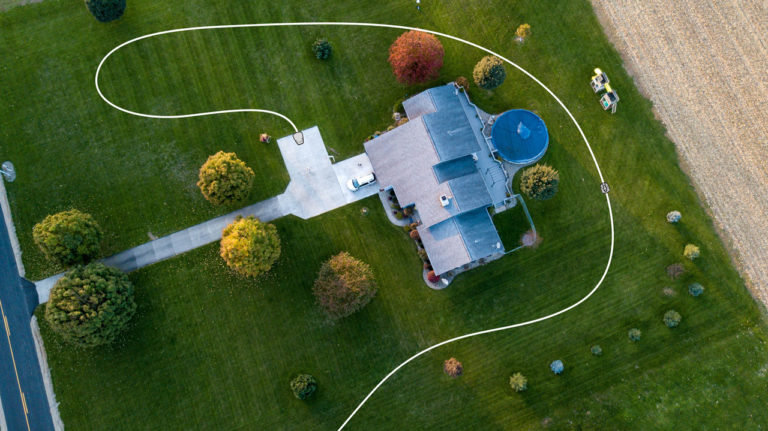
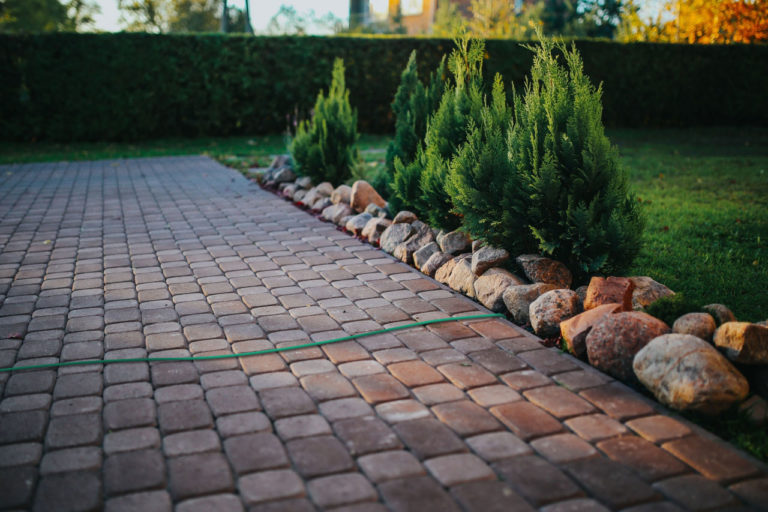
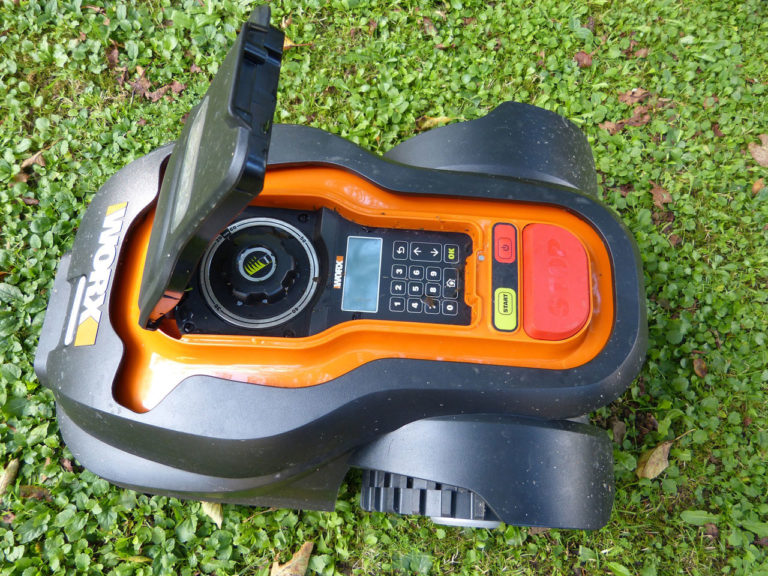
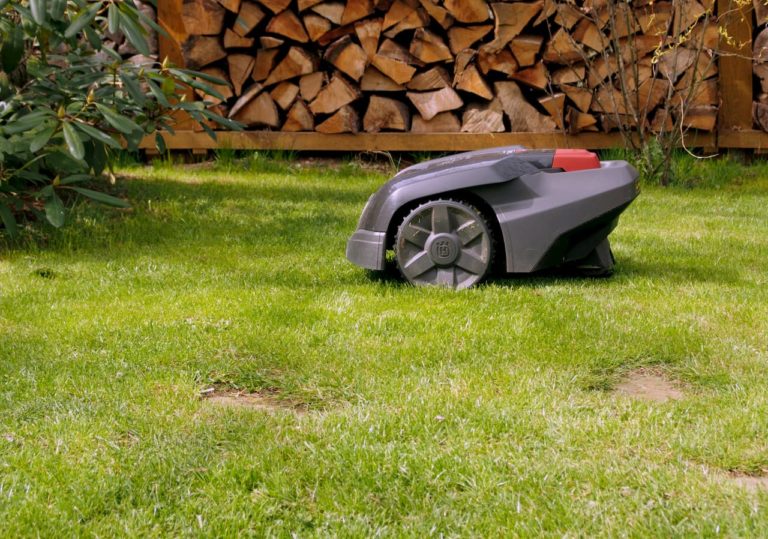
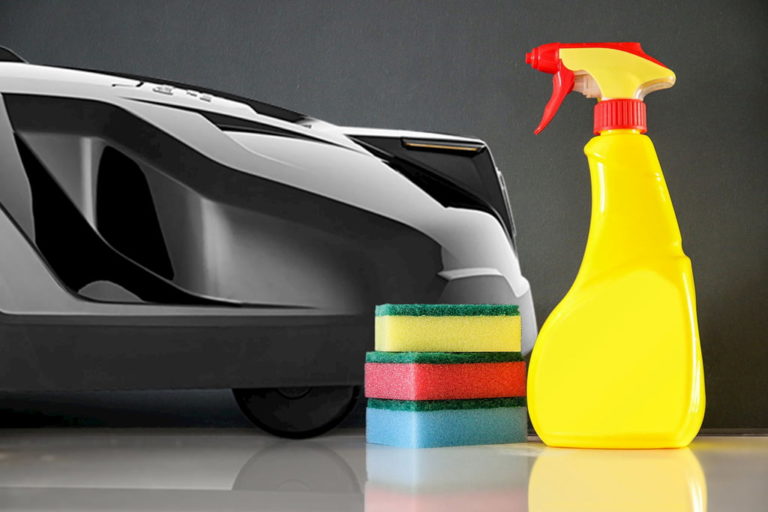
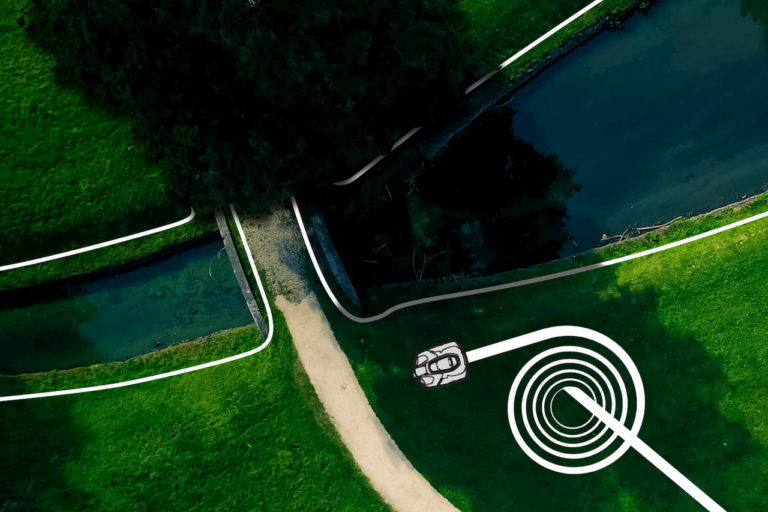
This was a *very* thorough guide, thank you ! Pernilla/Finland